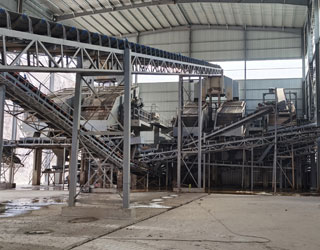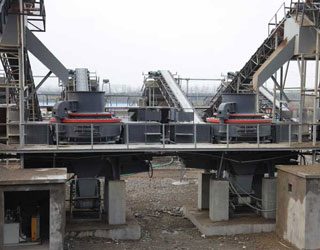
606 Millstones Photos
Stone millstones traditional way extracting flour grinding millet hand mill vertical design Hand millstones for making bread in ancient Rome. Reconstruction with the preparation of bread in the ancient Roman way.
 WhatsAppGet PriceGet A Quote
WhatsAppGet PriceGet A Quote
Roman Food History
According to the Roman food history, women that belong to the poor devoted their time in daily activity of grinding grains into flour. Thus, most of the poor Romans eat foods made for cereal grains like bread and porridges. Grinding process is like putting the grains in the middle of concave stones having a small one as roller.
 WhatsAppGet PriceGet A Quote
WhatsAppGet PriceGet A Quote
The Desperate and Distasteful Practice of Grinding Human Bones to Make
The rhyme comes from the popular fairy tale, Jack and the Beanstalk , and is one of the best-known rhymes in the English language. This rhyme is uttered by the giant, whom the eponymous character Jack encounters on the top of the beanstalk. The idea of grinding human bones to make bread may be reasonably assumed to belong to the realm of fantasy.
 WhatsAppGet PriceGet A Quote
WhatsAppGet PriceGet A Quote
Wheat and Wheat Grinding 101
For bread, I always use my trusted 100% whole wheat recipes. For rolls and other breads, I generally use at least half whole wheat flour, sometimes more and sometimes less (with the exception of this ciabatta bread, this rustic crusty bread and a small handful of others which I always splurge and make 100% white flour).
 WhatsAppGet PriceGet A Quote
WhatsAppGet PriceGet A Quote
Interesting facts about flour | Just Fun Facts
Rye flour is a constituent of bread in central Europe. Some types of flour are made from rice. The earliest archaeological evidence for wheat seeds crushed between simple millstones to make flour dates to 6000 BC. The Romans made flour by grinding seeds on cone mills, combination of two stone of which one, upper, is convex and other, bottom
 WhatsAppGet PriceGet A Quote
WhatsAppGet PriceGet A Quote
Ancient History and Archaeology.com
Bakeries in Pompeii. Many homes in Pompeii baked their own bread but it seems that bakeries or pistrina were popular food outlets in the town. In one bakery, 85 loaves were found left in an oven at the time of the eruption showing the demand for shop brought bread was high. Bakeries are easy to identify because of the large bread ovens attached
 WhatsAppGet PriceGet A Quote
WhatsAppGet PriceGet A Quote
www.jeeigenstad.nl
301 Moved Permanently. nginx
 WhatsAppGet PriceGet A Quote
WhatsAppGet PriceGet A Quote
Ancient History and Archaeology.com
Bakeries in Pompeii. Many homes in Pompeii baked their own bread but it seems that bakeries or pistrina were popular food outlets in the town. In one bakery, 85 loaves were found left in an oven at the time of the eruption showing the demand for shop brought bread was high. Bakeries are easy to identify because of the large bread ovens attached
 WhatsAppGet PriceGet A Quote
WhatsAppGet PriceGet A Quote
2000-year-old preserved loaf of bread found in the ruins of Pompeii
2000-year-old preserved loaf of bread found in the ruins of Pompeii. The violent eruption of Mount Vesuvius is considered to be one of the greatest natural catastrophes of the ancient world, when several cities in the Bay of Naples were covered in ash and rock, and left just as they stood on that fateful day in 79 AD.
 WhatsAppGet PriceGet A Quote
WhatsAppGet PriceGet A Quote
A Definitive Timeline of Bread
Bread Becomes a Commodity: The Roman Empire . Roman bakers took the concept and applied it on a wide scale. A typical Roman bakery could produce enough bread for 2,000 people daily. The ovens were massive: 20 feet in diameter, wood-fired, lined with brick and tile, and fitted with a rotating metal grate on which the loaves were baked.
 WhatsAppGet PriceGet A Quote
WhatsAppGet PriceGet A Quote
The History of Bread – From Ancient Flatbread to Sliced Bread
By all accounts, the Romans made excellent bread. During this period, the Romans brought their beer brewing expertise into the bakery field and started to add yeast to their doughs to produce a sourdough and bake a wonderful, fluffy leavened bread. Rome also gives us two fascinating developments in the history of bread. First, with the Edict of
 WhatsAppGet PriceGet A Quote
WhatsAppGet PriceGet A Quote
Roman Food
This entry is about food in Rome, the ancient empire. There will be at some point a separate entry on food in modern-day Rome, the city. Rome was founded, historians believe, by 625 BC (though the Romans themselves believed their city was founded in 735 BC.) The last Emperor (Romulus Augustus) was
 WhatsAppGet PriceGet A Quote
WhatsAppGet PriceGet A Quote
Baking Bread with the Romans: Part II – Panis Quadratus
It is also assumed that Pliny the Elder’s reference to Greek knowledge of leaven indicates that yeast likely became a component of Roman bread-making during this time as Greek bakers were employed in Roman settings: “The Greeks have established a rule that for a modius of meal eight ounces of leaven is enough.” (Pliny the Elder, Historia Naturalis – Book XVIII-26(11)).
 WhatsAppGet PriceGet A Quote
WhatsAppGet PriceGet A Quote
Pre-Roman town found during Bournemouth University dig
It is hoped the finds will show how life was before the Roman invasion. Animal remains, a number of quern-stones used for grinding corn to make bread, weaving and metalworking materials were also
 WhatsAppGet PriceGet A Quote
WhatsAppGet PriceGet A Quote
FS 9 History of Bread
At first grain was crushed by hand with pestle and mortar. In Egypt a simple grinding stone (quern) was developed. All bread was unleavened, there were no raising agents and bread was made from a mixed variety of grains. Today''s equivalents are Indian chapattis and Mexican tortillas. c 5000
Quern-stones are stone tools for hand- grinding a wide variety of materials. They are used in pairs. The lower stationary stone of early examples is called a saddle quern, while the upper mobile stone is called a muller, rubber or handstone. The upper stone was moved in a back-and-forth motion across the saddle quern.
 WhatsAppGet PriceGet A Quote
WhatsAppGet PriceGet A Quote
Where Your Flour Comes From
The smooth soft white, or slightly brown powder is one of the most common staples in stores around the world. With a little help from water and a few other ingredients, you can transform it into cakes, bread, muffins, cookies and lots of other based goods. Annually, we grow more than 750 million tonnes of wheat a year around the world. Wheat takes up more acreage than any other crop we grow
 WhatsAppGet PriceGet A Quote
WhatsAppGet PriceGet A Quote
The History Of Bread In France
Grinding stones dated 30,000 years old have been unearthed in Australia and Europe. Their likely use would be for grinding wheat to make bread, but there is no supportive evidence of this. Using modern dating technology we can estimate that bread was eaten between 14,600 and 11,600 years ago.
 WhatsAppGet PriceGet A Quote
WhatsAppGet PriceGet A Quote
Gristmill
Gristmill. A gristmill (also: grist mill, corn mill, flour mill, feed mill or feedmill) grinds cereal grain into flour and middlings. The term can refer to either the grinding mechanism or the building that holds it. Grist is grain that has been separated from its chaff in preparation for grinding .
 WhatsAppGet PriceGet A Quote
WhatsAppGet PriceGet A Quote
What Did the Ancient Romans Eat?
What Poor Romans Ate . Regardless of sumptuary laws, poor Romans would eat mostly cereal grain at all meals as porridge or bread, for which the women engaged in a daily grain-to-flour grinding. They placed the hard kernels between a concave stone and a smaller one serving as a roller. This was called a "thrusting mill."
 WhatsAppGet PriceGet A Quote
WhatsAppGet PriceGet A Quote
www.willemwortel.nl
301 Moved Permanently. nginx/1.19.2
 WhatsAppGet PriceGet A Quote
WhatsAppGet PriceGet A Quote
Grain milling in the Roman world | Not Just Dormice – Food for Thought
Grain milling in the Roman world. One of the most iconic sights in Pompeii are the bakeries with their donkey mills. These hourglass-shaped mills were one of several types in use in the Roman world to mill grain ready to make bread. The donkey mills have a solid lower stone, called a meta, which was bell-shaped.
 WhatsAppGet PriceGet A Quote
WhatsAppGet PriceGet A Quote
Archaeology in Israel
The earliest grinders were made of two stones between which the grain was rubbed. In the Iron Age, the lower stone was made of volcanic basalt stone, because it had a rough surface to make grinding quicker. The drawback was that basalt flakes could enter the bread and wear down the teeth.
 WhatsAppGet PriceGet A Quote
WhatsAppGet PriceGet A Quote
Act iv ty 4 P os from the past
• For a Roman poo look out for – bread grains, melon seeds, olive stones, orange or lemon pips, and small stones from bread made by grinding grains with stones (called quern stones). The stones would have been eaten unknowingly. • In this period Eric had the luxury of exciting new food brought to Britain by the Romans.
 WhatsAppGet PriceGet A Quote
WhatsAppGet PriceGet A Quote
The History of Bread – From Ancient Flatbread to Sliced Bread
By all accounts, the Romans made excellent bread. During this period, the Romans brought their beer brewing expertise into the bakery field and started to add yeast to their doughs to produce a sourdough and bake a wonderful, fluffy leavened bread. Rome also gives us two fascinating developments in the history of bread. First, with the Edict of
 WhatsAppGet PriceGet A Quote
WhatsAppGet PriceGet A Quote
The History Of Bread In France
Grinding stones dated 30,000 years old have been unearthed in Australia and Europe. Their likely use would be for grinding wheat to make bread, but there is no supportive evidence of this. Using modern dating technology we can estimate that bread was eaten between 14,600 and 11,600 years ago.
 WhatsAppGet PriceGet A Quote
WhatsAppGet PriceGet A Quote
BREAD AND BAKERS IN ANCIENT ROME | Cerealia
BREAD AND BAKERS IN ANCIENT ROME. Among the foods of ancient Rome bread is one of the most documented in the literary sources, with frescoes and bas-reliefs which represent the stages of preparation and sale; even the carbonized loaves found in the ruins of Pompeii analyzed revealed their secrets. By Plinio the Elder we know that bread was
 WhatsAppGet PriceGet A Quote
WhatsAppGet PriceGet A Quote
History of Bread timeline | Timetoast timelines
The first grinding stone, called a quern, was invented in Egypt, and the first grain was crushed. The modern Indian chapatis, made from unleavened whole wheat flour, and Mexican tortillas, made from corn, resemble the breads produced at that time.
 WhatsAppGet PriceGet A Quote
WhatsAppGet PriceGet A Quote
www.willemwortel.nl
301 Moved Permanently. nginx/1.19.2
 WhatsAppGet PriceGet A Quote
WhatsAppGet PriceGet A Quote
: Stone Grain Mill
SAMAP Model 220 Manual Stone Grain Mill / Grinder by Miracle Exclusive. 4.8 out of 5 stars. 4. $389.95. $389. . 95. $25.00 coupon applied at checkout. Save $25.00 with coupon.
 WhatsAppGet PriceGet A Quote
WhatsAppGet PriceGet A Quote
24 Bread Pompeii Photos
Ancient bakery bread oven and the remains of grinding stones, in the Roman town of Pompeii, Italy Ancient baker in Pompeii. Mills to produce flour in ancient Rome.
 WhatsAppGet PriceGet A Quote
WhatsAppGet PriceGet A Quote



 Mecca 500TPH Granite Crushing Plant
Mecca 500TPH Granite Crushing Plant